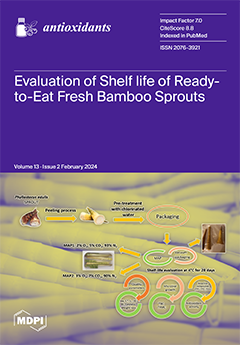Gamma-tocopherol methyltransferase (
γ-TMT), a key gene in the vitamin E biosynthesis pathway, significantly influences the accumulation of tocochromanols, thereby determining rice nutritional quality. In our study, we analyzed the
γ-TMT gene in 475 Korean rice accessions, uncovering 177 genetic variants, including
[...] Read more.
Gamma-tocopherol methyltransferase (
γ-TMT), a key gene in the vitamin E biosynthesis pathway, significantly influences the accumulation of tocochromanols, thereby determining rice nutritional quality. In our study, we analyzed the
γ-TMT gene in 475 Korean rice accessions, uncovering 177 genetic variants, including 138 SNPs and 39 InDels. Notably, two functional SNPs,
tmt-E2-28,895,665-G/A and
tmt-E4-28,896,689-A/G, were identified, causing substitutions from valine to isoleucine and arginine to glycine, respectively, across 93 accessions. A positive Tajima’s
D value in the
indica group suggests a signature of balancing selection. Haplotype analysis revealed 27 haplotypes, with two shared between cultivated and wild accessions, seven specific to cultivated accessions, and 18 unique to wild types. Further, profiling of vitamin E isomers in 240 accessions and their association with haplotypes revealed that Hap_2, distinguished by an SNP in the 3′ UTR (
tmt-3UTR-28,897,360-T/A) exhibited significantly lower
α-tocopherol (AT),
α-tocotrienol (AT3), total tocopherol, and total tocotrienol, but higher
γ-tocopherol (GT) in the
japonica group. Additionally, in the
indica group, Hap_2 showed significantly higher AT, AT3, and total tocopherol, along with lower GT and
γ-tocotrienol, compared to Hap_19, Hap_20, and Hap_21. Overall, this study highlights the genetic landscape of
γ-TMT and provides a valuable genetic resource for haplotype-based breeding programs aimed at enhancing nutritional profiles.
Full article






